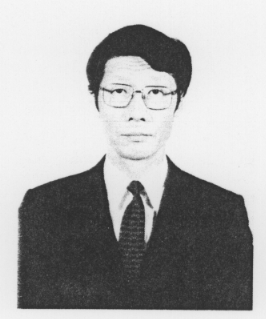 Masayuki MIYAMOTO Dr.Eng.
Masayuki MIYAMOTO Dr.Eng.Senior Researcher, Fundamental Research Division
There is much demand for railway rehabilitation throughout the world. In various quarters, comprehensive efforts are being rendered to answer the demands from society, users and operators in terms of railway speedup, safety, comfort, environment preservation, maintenance-free,reliability, energy conservation, etc. We believe, "intelligence" is one of the key technologies to meet these demands. "Intelligence" means that we pick up essential information in a timely manner and, based on such information, we make decisions in meeting a wide variety of needs. As the keywords such as "information society" or "power shift" attest, the role of information played in our individual as well as social life seems to have an increasing significance for decision-making and the railway is no exception. "Intelligence" in railway covers wide areas with a wide diversity of applicabilities. Here the subject is confined to vehicles with a certain reference to future perspective. As compared with automobilies and other modes of transport, the railway is favoured with respect to gathering information on running conditions and it is fit for introduction of "intelligence" through applicaiton of control technology. The airplane moves three-dimensionally wihle the automobile and ship move two-dimensionally on an indefinite course. By contrast, the railway is one-dimensionally constrained in movement; it runs repeatedly on the same track under nearly the same conditions. As we experience on the commuter train, the vehicle vibrates at the same spot in the same manner. Then, accustomed to it we can hold ourselves standing firm wihtout falling by adequately exploiting the knee spring. If the vehicle had the command of informaiton on such vibrations, it would be able to behave just like the human passenger and even to make itself free from vibraiton. Though the factors may vary every time, such as the weather, the number of riders or deterioration of vehicle and track, the vehicle might be abel to learn the running conditions and react to them, if if were intentionally exposed to various external disturbances. Meanwhile the vehicles run as a train. Namely, the rear vehicle moves on the same course as the front one, which means that the front vehicle can be imployed as a sort of sensor which transmits what it senses as a piece of information to the rear vehicle, that is, "preview control" is made possible. Thus track data such as irregularities, tangent, curvature, gradient, tunnel as well as vehicle parameters such as running speed, wheel/rail contact force, aging, passenger load can be provided to the vehicle in advance or may be measured or learned by the vehilce itself. If, based on such information, the stearing angele of wheelset, the characteristics of the primary and secondary spring, dampers and their acting positions can be appropriately controlled, the vehicle will be considered "intelligent". In the traditional railway vehcle with rigid parameters, the stability against hunting motion and the curve-followability mutually conflict and are incompatible with each other. Tradeoff between them is highly painstaking, but semi-active control, in which the parameters are changeabel depending on the speed or on the track being trangent or curved, would be the first step toward "intelligence". A stearing truck equipped with a passive mechanism to stear the wheelset in adequate direction for better negotiation of curve already exists. Further, it is conceivable to realize a truck equipped with active control which makes it absolutely free from vibration by adjusting the stearing angle of the wheelset to its lateral movement, track irregularities and to the radius of curvature. Needles to say, the "intelligent" vehicle based on such control technologies guarantees safety, which is the basic requirement of railway. Moreover, inthe event of the control system failing to function normally, reversion to the passive system is possible and an excessive action of the system can be suppressed by a stopper, thereby constituting a fail-safe system. Unlike the automobile, which is positively controlled by 4-wheel drive, 4-wheel stearing, active suspension, engine control, and is independent of servicing by non-expert, the railway vehicle is subject to periodic expert maintenance and an "intelligent" railway vehicle is reliably whiin reach of control technologies. RTRI-JR is ready to make more strenuous efforts toward an "intelligent" railway or the 21st century.